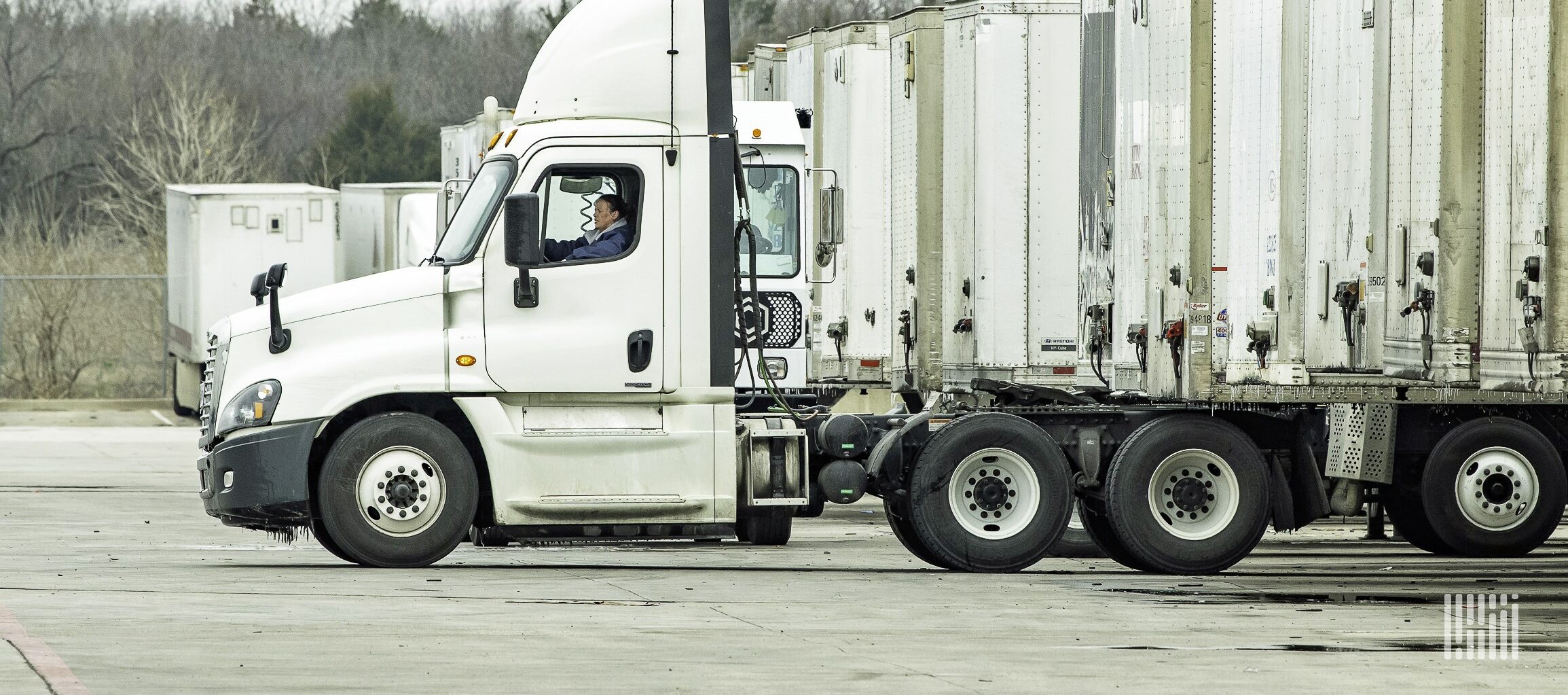The freight transport industry is on the cusp of a revolution. AI-assisted technologies have created ripples across shipping in recent years, but as more mature applications emerge and adoption accelerates, a tidal wave may be on the horizon. Newly available AI-powered analytics solutions in particular seem poised to reshape large shipping operations in 2025 and beyond.
This article explains how innovative logistics analytics capabilities empower shippers to leverage their own data to the fullest extent. Find out how your operations may be affected.
Key takeaways
- AI-assisted logistics analytics are set to revolutionize shipping operations by the end of 2025, enhancing data utilization and efficiency.
- Advanced technologies like machine learning and natural language processing will improve demand forecasting, routing, and accessibility of insights.
- Continuous automated insights will allow real-time analysis, enabling faster responses to changing logistics conditions.
- Customized analysis will filter irrelevant data, providing shippers with the most pertinent information tailored to their needs.
What is logistics data analytics?
Logistics data analytics refers to the process of collecting, analyzing, and interpreting large volumes of supply chain data. The objective of these efforts is to gain insights, improve decision-making, and optimize logistics operations.
For shipping specifically, data is typically consolidated from transportation management software (TMS), warehouse management systems (WMS), and enterprise resource planning (ERP) platforms, among other sources.
Logistics analysis usually entails the following steps:
- Data capture: Gathering information from across the supply chain, including shipment details, carrier performance, costs, transit times, and industry benchmarks.
- Information processing: Cleaning, organizing, and standardizing data to ensure accuracy and consistency.
- Analysis: Applying statistical methods, machine learning algorithms, and other analytic techniques to identify patterns, trends, and anomalies.
- Insight generation: Pulling meaningful insights out of historical data to inform business decisions and strategy.
- Visualization: Formatting the findings so they’re more easily understood, often through dashboards, reports, or interactive tools.
- Action planning: Developing and implementing strategies for improving supply chain operations, reducing costs, and enhancing efficiency.
Analyzing this data has always been a time-consuming, labor-intensive task, often requiring significant human expertise. And as companies have embraced big data, the volume of information collected has only increased — along with the complexity of making sense out of it.
Data deluge: Challenges of manual logistics analytics
Modern supply chains generate staggering amounts of data, from shipment details and carrier performance to inventory levels and transportation costs. While the potential for acquiring valuable insights is huge, manual analysis comes with several limitations:
- Complexity: Modern supply chains generate a ton of data, making it difficult for humans to identify hidden patterns and trends.
- Time constraints: Analyzing large sets of data manually is incredibly time-consuming, which can delay the identification of cost-saving opportunities. Generating meaningful insights may take weeks or months.
- Limited scope: Humans can only process so much info at once, so they’re likely to overlook important insights from time to time.
- Costly human mistakes: Human error in data entry and analysis can lead to financially painful logistics planning mistakes.
- Lack of objectivity: The subjectivity inherent in manual analysis can lead to biased or inconsistent logistics decision-making, especially when information is siloed within functions.
- Scaling difficulties: Scaling manual analytics to match business growth is tricky and resource-intensive, due in part to the challenges of integrating data from new sources.
Why are these challenges being addressed now?
Several factors point to 2025 as the tipping point for AI’s adoption in logistics analytics, including:
- The maturity of AI technology: Machine learning (ML) and deep learning algorithms have reached a level of sophistication and reliability that makes them genuinely useful in shipping logistics management.
- Growing data availability: The supply chain industry is generating vast amounts of high-quality data, providing the fuel needed for effective analysis.
- A focus on operational efficiency: Large shippers are actively seeking innovative ways to optimize operations and streamline costs. AI-powered supply chain analytics offers a promising path toward achieving these goals.
This combination of technological advances and logistics industry demand has created a watershed moment for addressing the long standing challenges of freight analytics.
Technologies driving the evolution of freight analytics
A shift from older analytics approaches to AI-assisted solutions equates to a giant leap forward for shippers in terms of capabilities. Several advanced technologies are being combined with AI to drive this change.
Machine learning
ML algorithms can analyze vast datasets to identify patterns and make predictions. In logistics, this translates to more accurate demand forecasting, optimized routing, and improved resource allocation.
Natural language processing (NLP)
NLP lets users interact with data analytics tools using everyday language. This ‘democratizes’ access to insights, allowing shippers to query complex data without specialized technical knowledge.
Computer vision
In logistics, computer vision handles tasks like automated inventory counts, package dimensioning, and damage detection. Ultimately it enhances efficiency and accuracy in warehousing and shipping operations.
Deep learning
A subset of machine learning, deep learning handles unstructured data especially well. It’s applied to tasks like warehouse layout optimization and fleet predictive maintenance.
Together, these technologies provide large shippers with far-reaching insights that pave the way for unprecedented operational efficiency.
6 transformative capabilities of AI-powered logistics analytics
Modern analytics solutions offer transformative capabilities across several areas of freight management. Here are some of the main ways they’ll impact large shippers going forward.
Continuous automated insight generation
Advanced AI systems can process extensive logistics data in real-time, automatically identifying opportunities and continuously updating insights as circumstances evolve. This reduces the need for users to formulate specific questions while facilitating faster response times than before.
Highly customized logistics analysis
AI systems filter through large datasets to extract the most relevant insights, tailoring them to the needs and nuances of your business. By reducing the ‘noise’ of irrelevant data, you can have a better understanding of information that’s truly important.
Integrated supply chain benchmarking
AI easily consolidates data from various sources, including TMS, ERP, WMS, and telematics. It can then compare the combined data with established market benchmarks to provide a comprehensive, informed view of your operations.
Optimization diversification
AI identifies cost-saving opportunities across diverse operational areas, empowering you to optimize rates, accessorial expenses, backhaul opportunities, carrier assignments, and more. This can lead to greater efficiency and collaboration across all functions.
Natural language interactions
AI offers conversational interfaces for exploring insights and recommendations, making complex data more accessible. This capability may also offer a means of extracting intelligence from raw data more easily, effectively helping users overcome the limitations of outdated reporting methods and technologies.
Rapid M&A analysis
AI offers rapid cost-savings analysis during mergers and acquisitions, while also supporting strategic, data-driven decision-making and operational accountability.
These capabilities demonstrate how AI-powered logistics analytics offer faster, more accurate, and more actionable insights, ultimately driving efficiency and cost savings across supply chains.
Unlock the power of your own data
AI-powered logistics analytics is poised to make a profound impact on the shipping industry in 2025, and you don’t want to be left behind. By leveraging the power of AI and your own data, you’ll be able to optimize shipping operations, reduce costs, improve customer service, and gain a competitive edge.
Loadsmart’s recently launched FreightIntel AI solution empowers you to achieve all of this without additional headcount or complex integration projects. And unlike many other AI-assisted freight analytics tools on the market, with FreightIntel you don’t even need to know which questions to ask to get the most relevant and valuable insights for your business.
Reach out to Loadsmart to unlock hidden insights and optimization opportunities within your supply chain.
FAQ
Logistics analysis is the process of interpreting and drawing conclusions from logistics metrics. It entails identifying trends, patterns, and anomalies that can inform decision-making across the supply chain.
Logistics analysts typically examine supply chain data to identify opportunities for optimizing transport, inventory, and distribution processes. Using various tools and technologies, they pinpoint inefficiencies, propose improvements, and help companies reduce costs while maintaining or improving service levels.
The highest salaries in logistics are usually for executive roles, like chief supply chain officer or VP of global logistics. Their compensation may reach the mid-six figures or higher. Exact salaries vary significantly based on factors like company size, industry, location, and experience.


